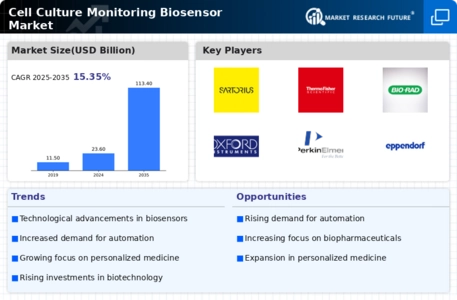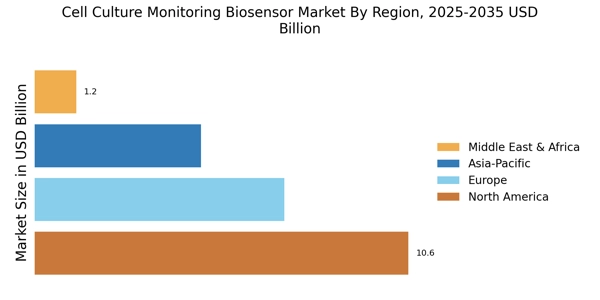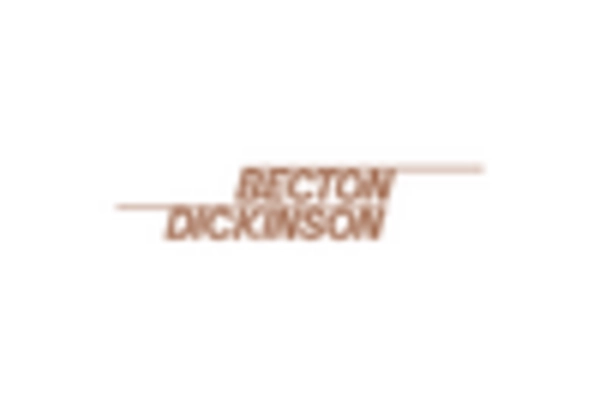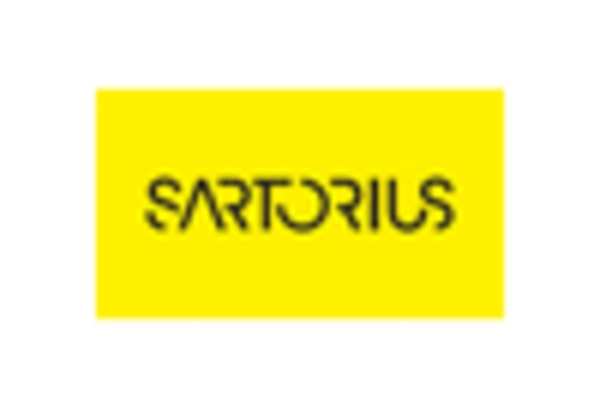Cell Culture Monitoring Biosensor Market Summary
As per MRFR analysis, the Cell Culture Monitoring Biosensor Market Size was estimated at 23.56 USD Billion in 2024. The Cell Culture Monitoring Biosensor industry is projected to grow from 27.18 USD Billion in 2025 to 113.36 USD Billion by 2035, exhibiting a compound annual growth rate (CAGR) of 15.35 during the forecast period 2025 - 2035.
Key Market Trends & Highlights
The Cell Culture Monitoring Biosensor Market is poised for substantial growth driven by technological advancements and increasing demand for personalized medicine.
- The integration of AI and machine learning is transforming biosensor capabilities, enhancing data accuracy and analysis.
- North America remains the largest market, while Asia-Pacific is emerging as the fastest-growing region in cell culture monitoring biosensors.
- Optical biosensors dominate the market, whereas electrochemical biosensors are witnessing rapid growth due to their cost-effectiveness.
- Rising demand for biopharmaceuticals and a growing focus on quality control are key drivers propelling market expansion.
Market Size & Forecast
| 2024 Market Size | 23.56 (USD Billion) |
| 2035 Market Size | 113.36 (USD Billion) |
| CAGR (2025 - 2035) | 15.35% |
Major Players
Thermo Fisher Scientific (US), Merck KGaA (DE), GE Healthcare (US), Becton Dickinson and Company (US), Agilent Technologies (US), Sartorius AG (DE), Lonza Group (CH), Bio-Rad Laboratories (US), F. Hoffmann-La Roche Ltd (CH)


















Leave a Comment